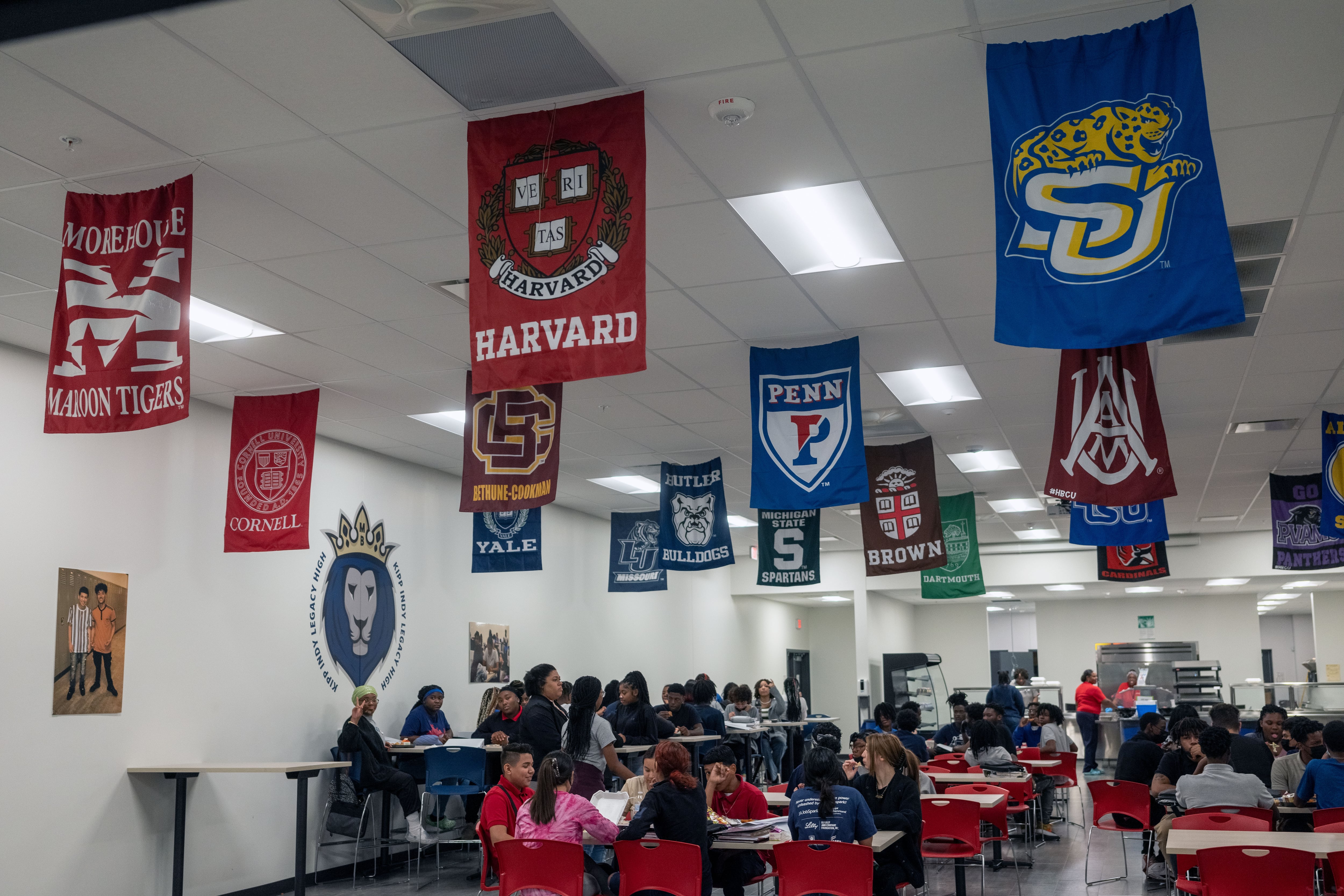Sign up for Chalkbeat Indiana’s free daily newsletter to keep up with Indianapolis Public Schools, Marion County’s township districts, and statewide education news.
With a key deadline for Indiana students to complete the Free Application for Federal Student Aid, or FAFSA, less than two weeks away, roughly one-third of the Class of 2024 had finished the form as of late March.
The National College Attainment Network’s tracker shows that 32.6% of the class had submitted the form as of March 22, or roughly 29,000 Indiana high school seniors. That’s more than 6,000 fewer Indiana students than at the same time last year, and slightly below the submission rate of 33.7% for this year’s high school class nationwide.
Filling out the FAFSA is considered an indicator of college-going, and Indiana leaders are pushing ways to increase the number of students going to some form of postsecondary education. Students who submit the FAFSA by April 15 get priority for state financial aid.
This year, the FAFSA has changed in multiple ways and has been completed at lower rates across the U.S.. The federal rollout of the new FAFSA has been marked by delays and glitches, including for students who have undocumented parents.
Colleges have also pushed back enrollment deadlines and expressed concern over the amount of time needed to process delayed data from students to award aid packages.
And at the same time, a new state law requires students, with some exceptions, to fill out the financial aid form starting with this year’s graduating class. The Indiana Commission for Higher Education set a goal of 60% completion for the Class of 2024. Last year, nearly 48% of students in Indiana’s high school Class of 2023 completed the form, per a state dashboard.
But McKalaih Legault, director for postsecondary program implementation at the commission, said she’s still feeling optimistic about reaching the 60% goal as the state’s deadline approaches.
The state, schools, and nonprofits are working together to share resources with students and help, she said.
Still planning to fill out the FAFSA? Here’s what to know:
Why should I fill out the FAFSA?
The form is a “key that unlocks all different opportunities,” Legault said.
Filling it out is how students are considered for federal financial aid like grants, loans, and scholarships, as well as some state aid and aid from individual colleges. Plus, students can also access a Next Level Jobs Workforce Ready Grant for a short- or long-term credential.
More than $400 million in state aid is available to students, per the commission. Higher education advocates have stressed that students are leaving money on the table by not filling out the form and seeing their financial options.
What do I need to fill out the new form?
While students and families continue to struggle with the new form, commission leaders said they’ve also heard the opposite: that the new form can take 10 minutes to fill out.
One big change from last year is that students and parents need to create their Federal Student Aid ID, which serves as a digital signature needed for the FAFSA, in advance.
What happens if I miss the April 15 deadline?
State financial aid is on a first-come, first-served basis after that deadline, per the commission. However, it’s still possible to fill out and submit the FAFSA after that deadline, and there is an appeals process for those who missed the deadline and still want to be considered for state aid, Legault said.
Where can I go for help to fill out the FAFSA?
Community organizations and schools have ramped up efforts to help with the form.
Indianapolis Public Schools has two upcoming FAFSA Family Filing Nights from 5 to 7 p.m. April 3 and 10 in the cafeteria of Arsenal Tech High School.
Legault also recommended contacting the commission’s outreach coordinator in your area. You can find yours and send them a message here.
Additionally, InvestED helps students and families across the state with FAFSA. You can also reach out directly for free, expert help. Call 317-715-9007 or email outreach@investedindiana.org. InvestED also hosts FAFSA events at high schools around Indiana. See a full schedule here.
And the U.S. Department of Education has email and live chat help, as well as a helpline: 1-800-4-FED-AID.
MJ Slaby oversees Chalkbeat Indiana’s coverage as bureau chief. She also covers access to higher education and Warren Township Schools. Contact MJ at mslaby@chalkbeat.org.






